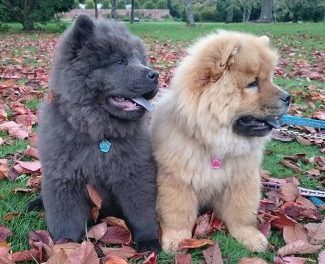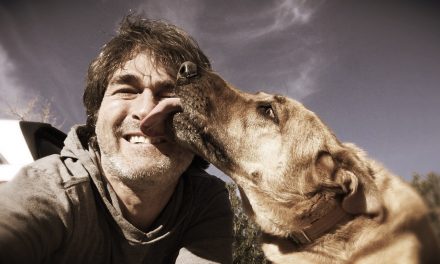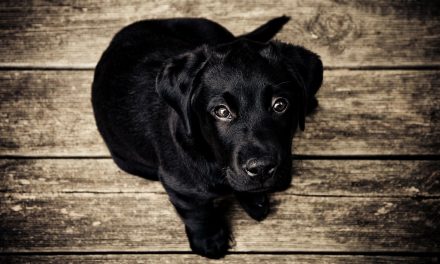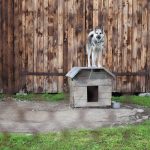- Home
- /
- Blog posts
- /
- Desensitising Your Dog to...
Many animals, including dogs, are frightened of fireworks and the loud exploding sounds that they tend to create. It is estimated that 45% of the dogs in the UK display signs of fear when exposed to the sound that a firework makes. As bonfire night, or bonfire season for some, is approaching, the next few months are likely to be filled with countless nights of fireworks in your local area. Thankfully, there are some steps that you can follow to help your dogs feel safe in their own home and desensitise them to fireworks all together.
Whilst not all dogs are anxious around fireworks, a large amount of them can display signs of fear and anxiety. It is possible to tell if your dog is suffering from anxiety because they will show signs of stress. Some of these symptoms can include:
- Aggressive behaviour
- Unwanted toileting inside the house
- Excessive drooling or panting
- Destructive behaviour
- A change in mood – depression
- Being particularly vocal – barking and whining
- Pacing and restlessness
- Repetitive or compulsive behaviours
- Hiding in a spot in the house
- Loss of appetite
- Vomiting
Some dogs can show more signs of anxiety than others, but these are some signs to look out for if you think that your pet may be suffering. Sometimes, it may be beneficial to consult a vet for advice if your dog’s behaviour is particularly concerning.
What to expect from our article
Top Ten Tips for Calming Your Dog During Fireworks
Before going into the details of desensitising your dog to fireworks, here are some tips for things that you should or shouldn’t do in order to help them cope.
- Never take your dog to a firework display or leave them alone outdoors whilst there are fireworks going off. Try to keep them indoors and if possible, stay at home with them. The sounds will be louder and more noticeable outdoors, which just adds even more stress to the situation. Even if your dog doesn’t verbalise the fact that they are afraid by barking or crying out, they can still be unhappy. Other, less obvious, signs that your dog is distressed can include excessive panting and yawning.
- Try to walk your dog earlier in the day at times where fireworks are unlikely to be going off. This will avoid any unexpected incidents where your dog can get startled.
- Make sure that all doors and windows are closed. When dogs are afraid, they can often look for a means of escape so that they can run away. You can also consider getting your pets microchipped so that in any event that they do escape, they have a higher chance of being returned home safely. Your dog should also be wearing a collar with a tag.
- It is important to remain calm and act normally if fireworks are going off so as to not further worry your dog. Dogs can often sense if their owner is stressed or acting out, so keeping calm in these tough situations is going to be helpful. You can also reward them with praise and fussing for calm behaviour if it helps them to relax. However, it is important to note that not all dogs will want to be comforted and if they are anxious then they can display signs of aggression. Try not to interfere with their personal space if they do become aggressive. All dogs react differently.
- It is okay to let your dog hide in the house if they are in a safe space. Some dogs prefer to seek out a place in which they deem ‘safe’ when they are scared.
- Avoid leaving your pet alone during fireworks. If you do have to leave them alone, avoid getting angry with them for unwanted toileting or destructive behaviour that may have happened in your absence. Shouting at an already distressed dog will only make them more stressed.
- Draw the curtains to minimise the flashing lights produced by the fireworks. The flashing lights can often be just as unsettling to dogs as the sounds. You could also leave the lights on to help reduce the flashes further.
- You can also provide your dog with a long-lasting chew or bone that can help to distract them from the situation.
- Try to feed and water your dog before the fireworks start. Anxiety for some dogs can cause them to not want to eat or drink.
- Try out the desensitising methods and training below to try and desensitise your dog to fireworks altogether. There are also products available to purchase that may help you, such as thunder shirts for dogs.
What is a Thunder Shirt for Dogs?
The thunder shirt is a patented anxiety vest for dogs that applies gentle and constant pressure, which can help to calm different types of anxiety and fear issues. They are a natural calming solution that is designed to make dogs feel safe and comforted and can be used during fireworks and thunderstorms to reduce stress levels.
Anxiety Relief Collars
You can also purchase an anti anxiety collar which is used to calm your dog. All you need to do is to put on the collar, and the natural ingredients such as lavender, can help to reduce your pet’s stress levels. These collars are typically adjustable, meaning that they can be used on both smaller and larger dogs as they are ‘one size fits all’.
Desensitising Your Dog to the Sound of Fireworks
The most common reason that dogs are afraid of fireworks is because of the loud exploding noise that they make. Loud noises are often triggering to dogs and can cause some major anxieties.
Conditioning your dog to feel differently about the noises that fireworks create can be achieved through gradual exposure of audio recordings of fireworks that are played at a low level. Whilst playing the recording at a low volume, if your dog seems relaxed, try to play a game with them, or feed them one of their favourite snacks. Do this for around ten minutes, and then take a break for a further five minutes so that you aren’t progressing too quickly. Taking a break also ensures that they don’t get bored, as this training is important.
For the next step, repeat the exercise, but slightly increase the volume of the recording. If your dog is still relaxed and concentrating on the activity, then feel free to continue what you’re doing. However, if your dog does start to exhibit signs of stress, then lower the volume and repeat step one until they feel ready to progress on to the next step.
The aim of this exercise is to try and desensitise your dog to the harsh sounds and try to get them to associate the noises with positivity and calmness. Gradually introducing them to louder sounds over time can help to improve this behaviour. It is important to progress slowly so that they don’t get even more frightened.
Once your dog seems comfortable with the sounds that are being played, you can start to build a positive association between your dog and loud noises. You can either do this at mealtimes, or you can use treats as positive reinforcement instead. The idea is for them to associate the sound of fireworks with a positive reward and they can even get excited by the noises because they know that a reward is coming.
All you need to do is to begin to play the recording and give your dog their food or a few treats. Once your dog has finished eating, stop playing the recording. Next, repeat this step over a few days, (sometimes longer if needed), and gradually increase the volume over time. Hopefully, by the end of the training, your dog will associate these noises with positive consequences as opposed to negative ones.
Another part of this behavioural therapy can include a similar type of training that helps to desensitise dogs to the lights associated with fireworks instead of the sounds. This step isn’t always necessary, as the sound is commonly the triggering factor and your dog may not have issues with the flashing lights.
Using Music to Relax Your Dog
Some studies show that music can help your dog to feel more calm and relaxed and certain genres of music can be more soothing than others. There are specific playlists that you can play at home that are designed to be relaxing for your dog to listen to. Playlists with a variety of different songs within a genre have proven to be the most effective for stress relief. It is also important to introduce different music instead of playing the same songs over and over so that your dog doesn’t get too familiar with the background noise and begin to get stressed.
You can find these playlists on youtube or spotify, among other places, and they can be really helpful to play during fireworks if they can help to make a difference. As well as the calming effect that can be achieved by playing music, it can also help to mask the sounds of fireworks too.










